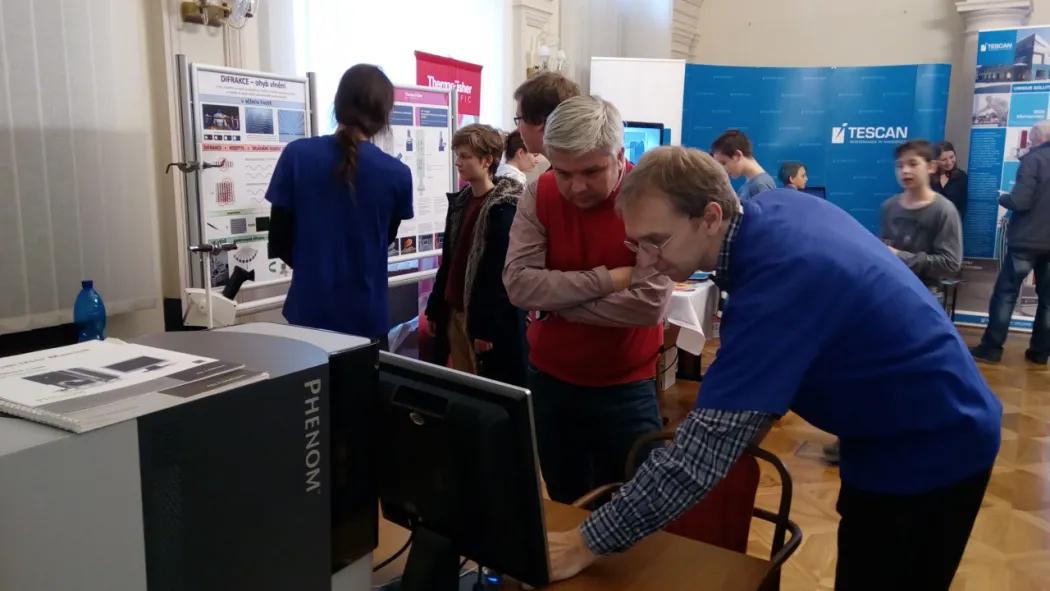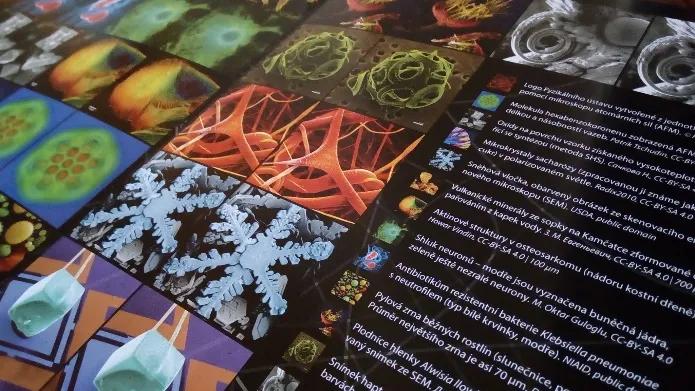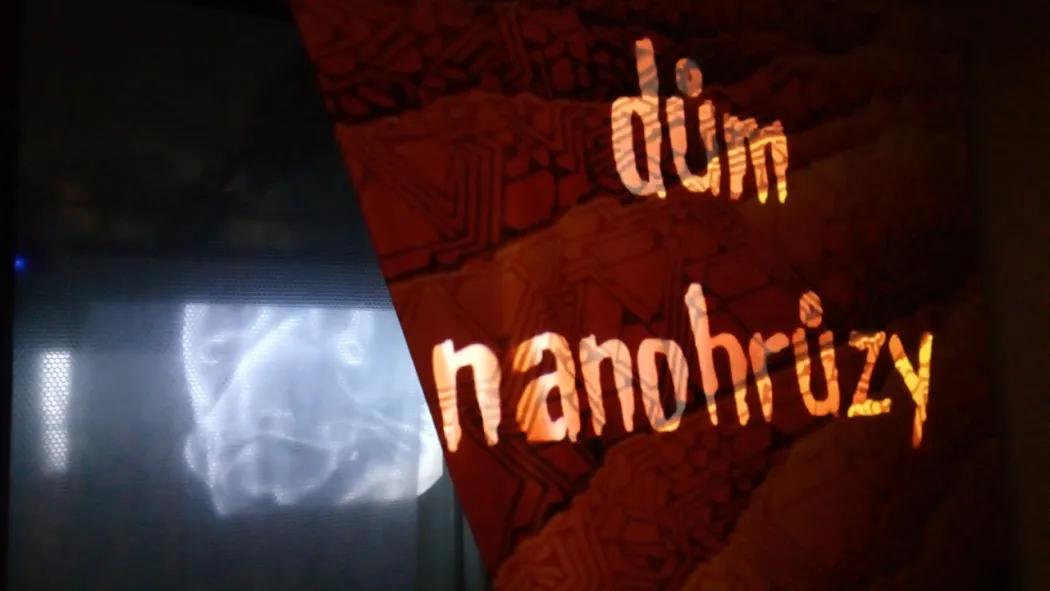Every year, as part of the Week of Science and Technology, the Institute of Physics organizes Open Doors Days which have been visited by more than 1000 people interested in physics and modern science and technology this year. The Institute of Physics was also a guarantor and the main organizer of the Day of Super Lasers and the Day of Nanotechnologies in the Building of the Czech Academy of Sciences in Národní třída in Prague which was visited by almost 3000 visitors.
Open Doors Days took place from 9th November to 11th November at Slovanka and Cukrovarnická street and in laser centres in Dolní Břežany where the visitors could choose from a number of lectures and tours to laboratories focusing on different physical topics, e.g. liquid crystals, thermoelectric conversion, superconductors and magnetic levitation, electron microscope view etc. (full programme here). Through virtual reality, the visitors were able to see the ATLAS experiment in CERN in Genova for the first time. Mainly the youngest visitors were not afraid to “teleport” over 100 m underground and “fly” in a huge underground cave where the ATLAS detector is located. The device can also show trajectories of particles after a crash in the biggest world accelerator LHC. Also, the programme Physics for the Youngest in Cukrovarnická full of experiments and physical riddles intended for small as well as older children was really popular.
Day of Superlasers which took place on 7th November offered to its visitors lectures where the visitors learned about the history of lasers, their practical applications and to find out what the potential possibilities of their use not only in science and research are. The participants were able to use their newly acquired knowledge in two discussions with scientists from the Institute of Physics. In an interactive programme, the visitors were able to practically experience the behaviour of light, different types of lasers and instruments which are used in directing laser beams. Also, virtual reality was available and a unique laser labyrinth where the visitors could feel like in an action film. The Day of Superlasers was organized by the Institute of Physics in collaboration with experts who participate in the research programme Strategy AV21 – Light in the Service for the Society: Institute of Scientific Instruments of the CAS, Institute of Photonics and Electronics of the CAS and Institute of Plasma Physics of the CAS. The ambassadors of the Day of Superlasers were Dr Tomáš Mocek from the HiLASE Centrum and Dr Bedřich Rus from ELI Beamlines.
The ambassador for the Day of Nanotechnologies on Thursday 9th November was Dr Antonín Fejfar from the Institute of Physics. The visitors learned in lectures what nanotechnologies are and how we can make and use them – from the use in medicine through spintronics and power engineering to textiles and a lot more. The visitor also could see in their own eyes an electron microscope and images taken by it, or they could learn where nanostructures appear, not only in nature but also in our homes. Also TESCAN, Thermo Fischer Scientific and NanoVision, Czech leaders in the field of electron and atom microscopy presented their work and products. As part of the exhibition called "Czech Science Moves the World" also scientists from the Institute of Physics were introduced, who received any of the prestigious Czech or international awards for their excellent research. The day was concluded by a discussion with top experts with the theme “Nanotechnologies – the Future around us” on the use of nanotechnologies and the position of the Czech Republic as a “nanopower” in the world field of their research and development.
The Institute of Physics is also the author of the House of Nanohorror exposition which was located in the building of the Czech Academy of Sciences in Národní třída during the whole Week of Science and Technology and it was visited by over 5000 visitors. In the House of Nanohorror, created in collaboration with scenographer Ricardo Hoineff, the visitors were able to see the beauties and horrors of nano and micro world in images taken by an electron microscope. The experience exhibition was divided into eight parts devoted to the individual areas of the nanoworld – from the illustration of how we can see and move individual atoms, through the beauty of chemical gardens to the internal life of a cell. From viruses, bacteria and other organisms which we share our bodies with, through the beauty of pollen grains to the impressive animal “nanoempire”.
If you did not manage to visit you can watch all lectures from all the thematic days from the comfort of your home at YouTube kanálu(link is external) Týden vědy a techniky (Week of Science and Technology). More photos and information can be found on Facebook of the Institute of Physics: www.facebook.com/FZUAVCR(link is external)








